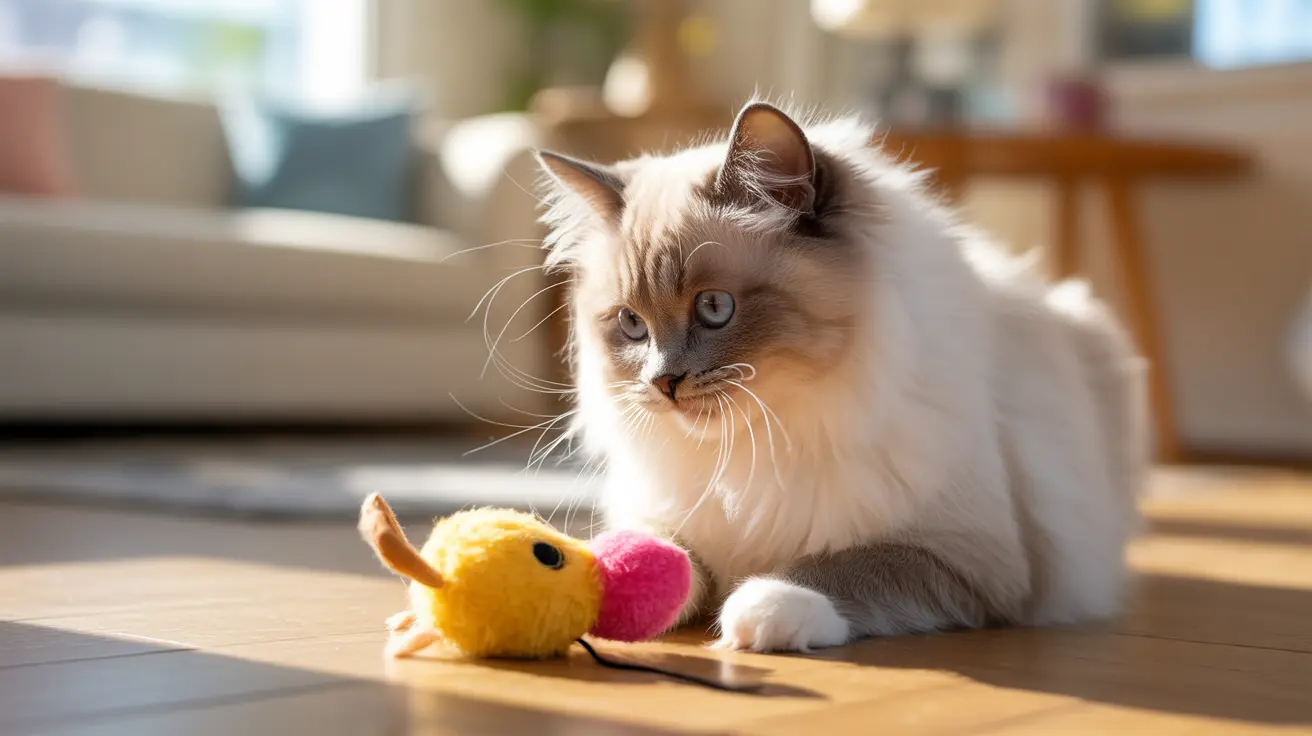Cat whiskers are far more than just decorative facial features - they're sophisticated sensory tools that provide crucial insights into your feline friend's emotional state and intentions. Understanding cat whisker position meanings can help you better communicate with your pet and recognize their needs.
These specialized sensory organs, scientifically known as vibrissae, serve multiple functions in feline behavior and navigation. In this comprehensive guide, we'll explore how different whisker positions reveal your cat's mood and what these subtle changes in whisker placement tell us about their emotional state.
The Basic Anatomy of Cat Whiskers
Cat whiskers are specialized sensory hairs that extend from follicles packed with sensitive nerves and blood vessels. Most cats have approximately 24 whiskers on their face, arranged in four neat rows of six on each side. These remarkable sensory tools are about three times thicker than regular cat hair and are embedded much deeper in the skin.
Beyond the facial area, cats also have shorter whiskers above their eyes, on their chin, and even on their front legs. Each of these serves a specific purpose in helping your cat navigate and interact with their environment.
Common Whisker Positions and Their Meanings
Relaxed and Fanned Out
When your cat's whiskers are relaxed and naturally spread out to the sides, this indicates a content and comfortable cat. This neutral position suggests your pet feels safe and at ease in their environment. You'll often notice this whisker position when your cat is calmly lounging or during peaceful interactions.
Forward-Pointing Whiskers
Forward-oriented whiskers typically signal curiosity or excitement. You might notice this position when your cat spots something interesting or during playtime. This whisker position helps cats gauge distances and spaces as they explore or hunt, acting as natural spatial sensors.
Flattened Against the Face
When whiskers are pulled back tightly against the cheeks, it often indicates fear, stress, or aggression. This defensive position might appear when your cat feels threatened or uncomfortable. It's important to give your cat space when you observe this whisker position, as it could be a warning sign.
The Role of Whiskers in Daily Cat Life
Cat whiskers serve essential functions beyond emotional expression. These sophisticated sensors help cats:
- Navigate in darkness by detecting air currents
- Judge whether they can fit through tight spaces
- Maintain balance during jumping and climbing
- Track and capture prey with precision
Whisker Care and Protection
Never trim or cut your cat's whiskers, as this can severely impact their ability to navigate their environment safely. Whiskers naturally shed and regrow as part of your cat's normal hair cycle. If you notice any unusual changes in your cat's whiskers or whisker position, consult with your veterinarian.
Frequently Asked Questions
What does it mean when my cat's whiskers are relaxed and fanned out to the sides?
When your cat's whiskers are relaxed and fanned out, it indicates they're feeling content, comfortable, and safe in their environment. This is their natural, neutral position and suggests a calm, happy cat.
Why do cats push their whiskers forward, and what does this whisker position indicate?
Forward-pointing whiskers typically indicate curiosity, excitement, or focused attention. This position helps cats gather more sensory information about objects or situations that interest them.
How should I interpret a cat's whiskers when they are pulled back tightly against the face?
Whiskers pulled back against the face often signal fear, stress, or defensive aggression. This position may indicate your cat feels threatened or uncomfortable and needs space.
Can twitching or vibrating whiskers tell me if my cat is excited or curious?
Yes, twitching or vibrating whiskers usually indicate heightened excitement or intense focus. You might notice this during play or when your cat is tracking potential prey.
Why is it important not to trim or cut a cat's whiskers, and what problems can whisker damage cause?
Trimming whiskers can disorient cats and impair their ability to navigate safely, judge distances, and maintain balance. Damaged whiskers can lead to confusion, anxiety, and potential injury as cats rely on these sensory tools for spatial awareness and safety.






